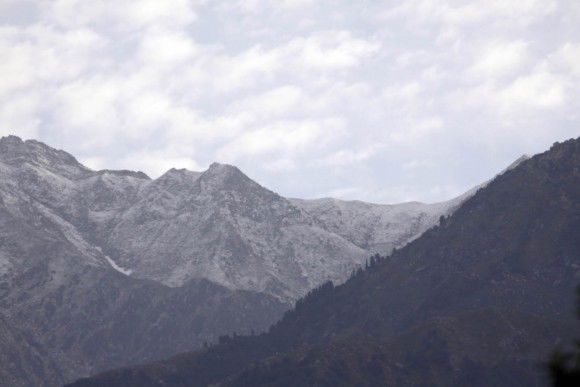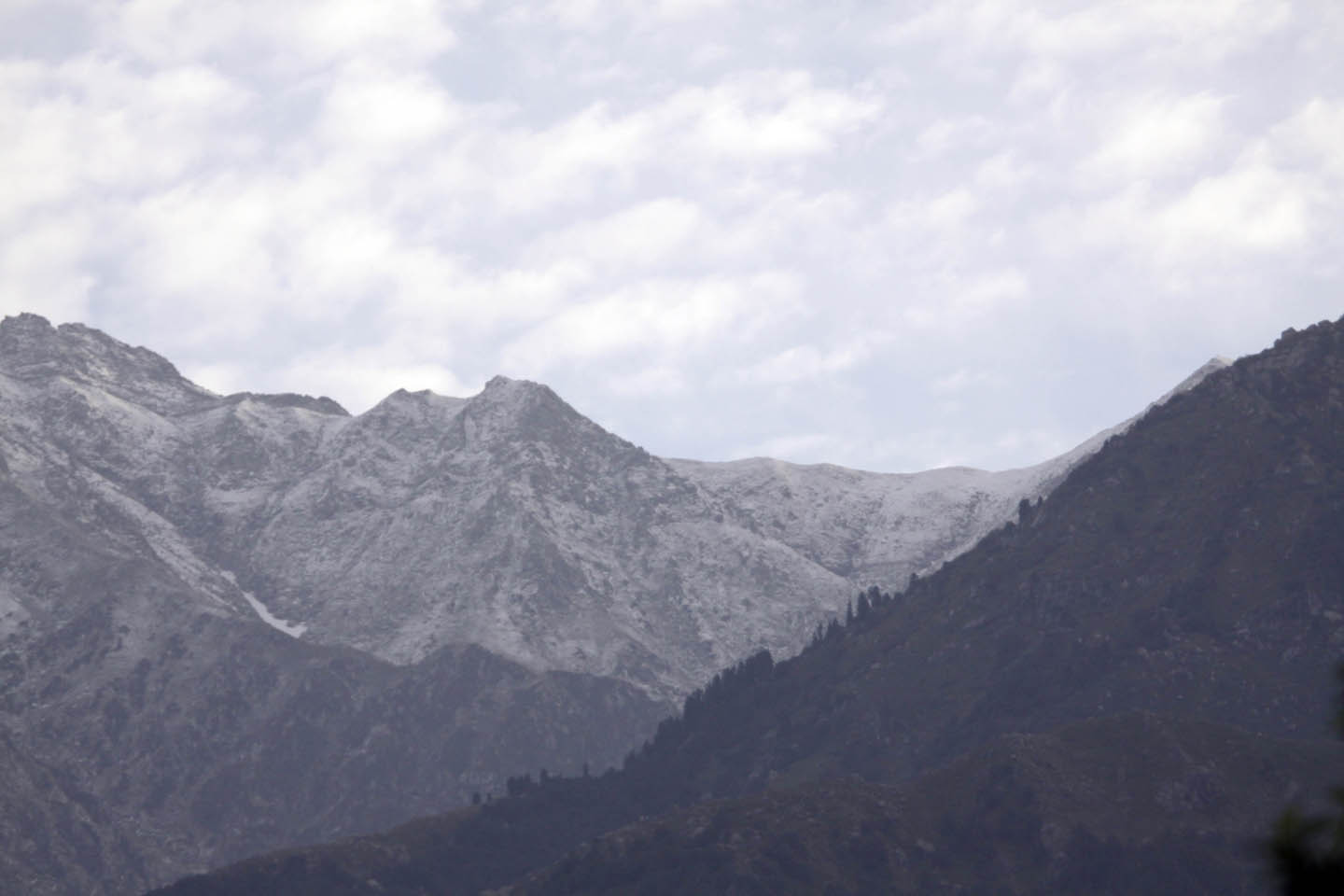Articles features
Five degree mercury rise in Hindu Kush by 2050, warn experts

New Delhi, Dec 11
Temperatures across the Hindu Kush, a mountain range extending west of the Himalayas, will increase by about one to two degrees Celsius, in some places by four to five degrees, in the next 35 years, international researchers said on Friday.
They warned that extreme rainfall events are becoming less frequent but more violent and are likely to increase in intensity.
These startling facts came to light in a climate and water atlas, "Mapping an uncertain future: Atlas of climate change and water in five crucial water basins in the Hindu Kush Himalayas", published by three international institutes.
They are the International Centre for Integrated Mountain Development (ICIMOD), GRID-Arendal, a Norwegian Foundation, and the Centre for International Climate and Environmental Research-Oslo (CICERO).
The first-of-its-kind atlas offers a comprehensive, regional understanding of the changing climate and its impact on water resources in five of the major river basins - the Indus, the Brahmaputra, the Ganges, the Salween and the Mekong.
The atlas was released jointly by the research institutes on the sidelines of the Paris COP-21 to mark International Mountain Day on Friday.
"This atlas sheds light on the state and fate of the water resources of the Hindu Kush Himalayas, a region that is highly vulnerable to climate change and one of the poorest regions in the world," Kathmandu-based ICIMOD director general David Molden told IANS in an email.
The information in the atlas presents science-based information that will help develop solutions and take the necessary action to deal with changes in the region, he added.
It uses maps and info graphics to show how the region's climate is changing now and into the future, with severe consequences for populations - both local and downstream.
Increased temperatures by 2050 will not only increase the rates of snow and ice melt but can also result in a change of precipitation, with the main loss in the Indus basin. Communities living immediately downstream from the glaciers are the most vulnerable to glacial changes.
The Hindu Kush Himalayan region is home to 210 million people and providing water to over 1.3 billion people - more than the entire continent of Europe.
Precipitation will change with the monsoon expected to become longer and more erratic, said the researchers.
Despite the overall greater river flow projected, higher variability in river flows and more water in pre-monsoon months are expected, which will lead to a higher incidence of unexpected floods and droughts, greatly impacting on the livelihood security and agriculture of river-dependent people, they said.
Changes in temperature and precipitation will have serious and far-reaching consequences for climate-dependent sectors, such as agriculture, water resources and health.
The atlas stresses on development of flexible and cooperative strategies among countries to meet the challenges posed by either too much or too little water.
(Vishal Gulati can be contacted at [email protected])
They warned that extreme rainfall events are becoming less frequent but more violent and are likely to increase in intensity.
These startling facts came to light in a climate and water atlas, "Mapping an uncertain future: Atlas of climate change and water in five crucial water basins in the Hindu Kush Himalayas", published by three international institutes.
They are the International Centre for Integrated Mountain Development (ICIMOD), GRID-Arendal, a Norwegian Foundation, and the Centre for International Climate and Environmental Research-Oslo (CICERO).
The first-of-its-kind atlas offers a comprehensive, regional understanding of the changing climate and its impact on water resources in five of the major river basins - the Indus, the Brahmaputra, the Ganges, the Salween and the Mekong.
The atlas was released jointly by the research institutes on the sidelines of the Paris COP-21 to mark International Mountain Day on Friday.
"This atlas sheds light on the state and fate of the water resources of the Hindu Kush Himalayas, a region that is highly vulnerable to climate change and one of the poorest regions in the world," Kathmandu-based ICIMOD director general David Molden told IANS in an email.
The information in the atlas presents science-based information that will help develop solutions and take the necessary action to deal with changes in the region, he added.
It uses maps and info graphics to show how the region's climate is changing now and into the future, with severe consequences for populations - both local and downstream.
Increased temperatures by 2050 will not only increase the rates of snow and ice melt but can also result in a change of precipitation, with the main loss in the Indus basin. Communities living immediately downstream from the glaciers are the most vulnerable to glacial changes.
The Hindu Kush Himalayan region is home to 210 million people and providing water to over 1.3 billion people - more than the entire continent of Europe.
Precipitation will change with the monsoon expected to become longer and more erratic, said the researchers.
Despite the overall greater river flow projected, higher variability in river flows and more water in pre-monsoon months are expected, which will lead to a higher incidence of unexpected floods and droughts, greatly impacting on the livelihood security and agriculture of river-dependent people, they said.
Changes in temperature and precipitation will have serious and far-reaching consequences for climate-dependent sectors, such as agriculture, water resources and health.
The atlas stresses on development of flexible and cooperative strategies among countries to meet the challenges posed by either too much or too little water.
(Vishal Gulati can be contacted at [email protected])


34 minutes ago
"Not about witch hunt to blame pilots but ...": Aviation Safety consultant Mark D Martin slams AAIB report on Air India flight 171 crash

3 hours ago
EU urged to respond firmly as Trump's tariff threat sparks outrage

4 hours ago
South Korean Prez appoints special envoys to EU, France, Britain, India

7 hours ago
EAM Jaishankar to visit China today for SCO meeting

7 hours ago
Axiom-4 splash down on July 15 at 3 pm: Jitendra Singh on Shubhanshu Shukla's return

7 hours ago
Mexico calls new US tariffs unfair, launches bilateral negotiations

7 hours ago
Parts of Grand Canyon in US remain closed due to growing wildfires nearby

7 hours ago
Dutch PM voices concern over US tariffs on EU goods

7 hours ago
TN goods train fire sparks evacuation, Chennai rail services hit

7 hours ago
President Murmu nominates four members to RS; PM Modi extends best wishes

7 hours ago
Sivaganga custodial death: Vijay leads TVK's protest in Chennai demanding justice

7 hours ago
Why no RG Kar-like mass outcry on Kasba law college rape case?

7 hours ago
Living martyr of Kerala's political violence, C. Sadanandan Master, nominated to Rajya Sabha
































